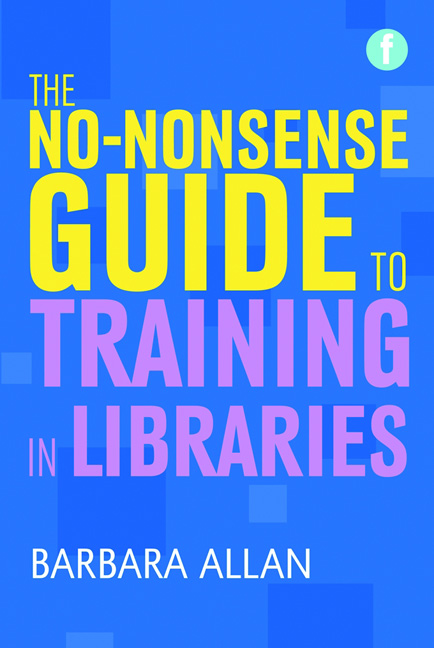Book contents
- Frontmatter
- Contents
- Acknowledgements
- 1 Introduction
- Part 1 Training practices
- 2 Different approaches to learning and teaching
- 3 Making training interesting
- 4 Use of different technologies to support training practices
- 5 Making it happen
- 6 Delivering face-to-face training sessions
- 7 E-learning and blended learning
- Part 2 Learning in the workplace
- Index
2 - Different approaches to learning and teaching
from Part 1 - Training practices
Published online by Cambridge University Press: 08 June 2018
- Frontmatter
- Contents
- Acknowledgements
- 1 Introduction
- Part 1 Training practices
- 2 Different approaches to learning and teaching
- 3 Making training interesting
- 4 Use of different technologies to support training practices
- 5 Making it happen
- 6 Delivering face-to-face training sessions
- 7 E-learning and blended learning
- Part 2 Learning in the workplace
- Index
Summary
Introduction
This is an important chapter, as it introduces underpinning approaches to learning and teaching which are relevant in different training situations. If a trainer has a basic understanding of these approaches then s/he will be able to ensure that their training activities are logical, coherent and designed to meet the needs of diverse participants.
This chapter focuses on the following themes:
• three approaches to learning and teaching
• a model for workplace learning programmes
• theories of learning.
The chapter starts by exploring three different approaches: content or trainercentred approaches, where the focus is on what is to be taught; learner-centred approaches, which, as the name implies, put learners at the centre of the learning process; and social approaches to learning. There is overlap between learnercentred and social approaches to learning. Social approaches to learning are very relevant to trainers, as – particularly in continuous professional development – learning communities are often developed as part of the training strategy. In reality, an individual's training practice rarely fits so neatly into any one of these three categories, but may involve a blend of content- or trainer-centred approaches, learner-centred approaches and social approaches.
In recent years there has been a shift in emphasis from traditional face-to-face training sessions and towards designing development programmes which are integrated into workplace practices. This is called the 70:20:10 model and it is explored in this chapter. This model is very relevant to library and information trainers who are developing training programmes in which training events are integrated into workplace learning activities (explored in Chapter 8).
Finally, the chapter ends with an exploration of three learning theories. The section starts by looking at three different models of learning style (VAK, Honey and Mumford, Dunn and Dunn) and their relevance to training. This is followed by two models of learning: Bloom's Taxonomy of Learning; and the Learning Competences model. The Bloom's Taxonomy of Learning model provides an insight into the design of learning outcomes, and also of learning activities, and into the need for these to be aligned. The Learning Competence model is relevant both to the design of training events and to people's behaviours as they learn something new
- Type
- Chapter
- Information
- The No-nonsense Guide to Training in Libraries , pp. 15 - 32Publisher: FacetPrint publication year: 2013



